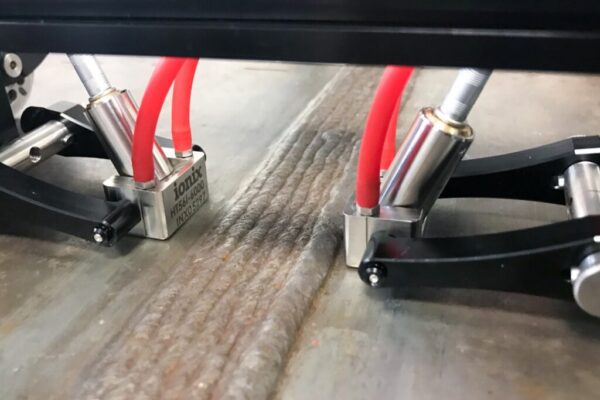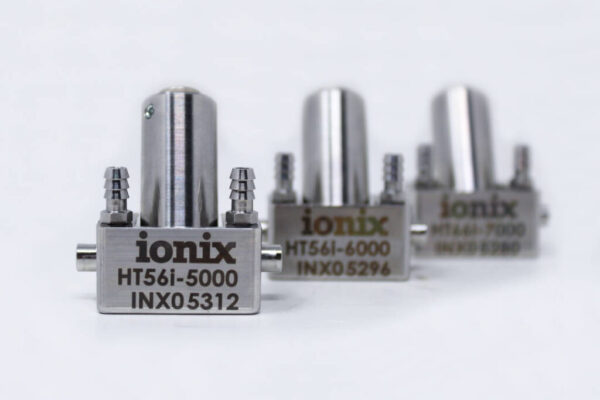
High temperature weld root corrosion inspection with
HotSense™ TOFD
Ultrasonic time-of-flight diffraction (TOFD) is a popular method widely used in petrochemical, energy and other industries for the in-service detection and characterisation of weld defects such as root corrosion, porosity, inclusions, and cracks. However, with increasing demand for on-stream measurements, conventional TOFD is limited due to the temperature at which these probes can operate, often causing failure of the transducer, or causing noise in the wedges to mask the ultrasound signal. As a result, TOFD inspections of hot assets previously needed to be conducted while the parts are offline, extending plant shutdowns and leading to premature replacement of vessels which cannot be routinely inspected in operation. Ionix high-temperature TOFD transducers, with integrated wedges, are suitable for weld inspections at continuous elevated temperatures up to 350 °C enabling on-stream inspection of critical, hot, assets.
The High Temperature TOFD Challenge
Conventional TOFD is limited due to the temperatures at which the standard probes can operate, causing failure of the transducer, noise in the wedges which masks the signals, or drift of the lateral wave and backwall. Because of an increasing demand in petrochemical, energy and other industries for on-stream inspection of high temperature assets for pre-shutdown and safe operation the standard probe temperature range would not work efficiently.

HotSense™ Solution
Ionix HotSense™ TOFD probes with integrated wedges are suitable for continuous operation up to 350 °C/660 °F without cooling or duty cycling. With the combination of Ionix’ high temperature capability and compatibility with commercial scanners and crawlers, Ionix probes would reach a wider client base and hit that increasing demand.
Key Features and Benefits
The HotSense™ Time-of-Flight Diffraction probes with integrated wedges are the only commercially available solution for continuous operation at temperatures up to 350 °C / 660 °F without cooling or duty cycling. Because of the high temperature probes and wedges can be heated to the asset temperature to achieve stable signals for reliability and repeatability. They also provide exceptional signal-to-noise and high sensitivity from ambient to high temperature.
Another key feature is that the integrated design is compatible with commercial.
Some key benefits include:
- Clear, precise, and high-quality inspections.
- Perform on-stream inspections to maintain safe operation.
- Standardise data collection using commercial UT flaw detectors and scanners.
- Compliant to ISO 22232-2 and ASTM E/1065 to meet your existing asset integrity UT procedures.

Highlights
- Validation of high temperature TOFD probes and modified scanner for encoded on-stream inspection of critical assets and infrastructure.
- Full circumferential pipe weld inspection at 200 °C surface temperature.
- Remaining ligament of the weld root was accurately determined within ±0.2 mm of the benchmark data taken with conventional TOFD at ambient temperature.
- Suitable resolution was achieved for accurate weld root evaluation at elevated temperature.
For a more thorough explanation Click Here.
